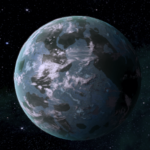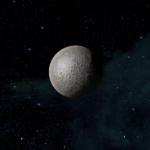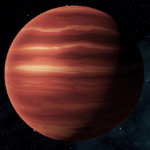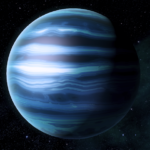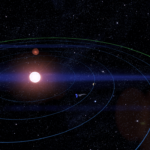System Specs:
- Stellar Mass: N/A Sol Masses
- Stellar Class: N/A
- Luminosity: N/A Sol
- Planets: 5
- Moons: 0
- Asteroid Belts: 0
- Asteroids: 0
- Objects: 0
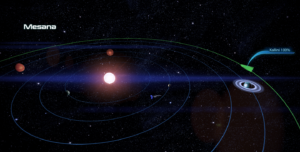
–
Planets Directory:
- Lesuss
- Lymetis
- Medokos
- Shastessia
- Vylius
–
Lesuss:
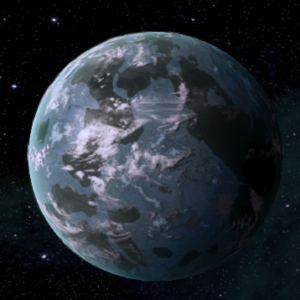
- Orbital Distance: 0.8 AU
- Orbital Period: 0.8 Earth-years
- Keplerian Ratio: 0.8
- Radius: 6,126 km
- Day Length: 23.5 Earth-hours
- Atmospheric Pressure: 0.75 atm
- Surface Temp: 38 °C
- Surface Gravity: 1.23 g
- Mass: 1.126 Earth-masses
- Colony: Asari
Capital: Marya, founded 473 BCE, population unknown
Lesuss is an unpopular garden world, with characteristics just outside of the comfort zone of its asari population. Its gravity is a little too high, its diseases a little too virulent, and the soil inhospitable for growing food. Further information is difficult to come by–the asari government is uncharacteristically silent about Lesuss. Normally, a garden world settled so long ago would be highly populated, but little light pollution can be seen on Lesuss’s night side.
–
Lymetis:
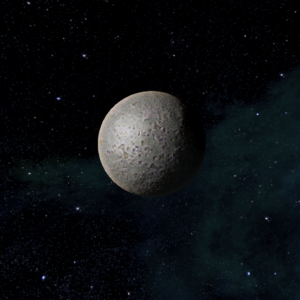
- Orbital Distance: 1.5 AU
- Orbital Period: 2 Earth-years
- Keplerian Ratio: 0.844
- Radius: 4,109 km
- Day Length: 63.6 Earth-hours
- Atmospheric Pressure: 0.17 atm
- Surface Temp: −59 °C
- Surface Gravity: 0.76 g
- Mass: 0.313 Earth-masses
- Colony: Asari
Capital: Irira, founded 430 BCE, population 12,550
Lymetis is a desertified rock planet with a thin atmosphere of carbon dioxide and monoxide. The surface has water ice as well as occasional liquid water near volcanic areas. The planet has an abundant supply of zeolites, which the asari use for water purification, as an ingredient in detergent, and as a shielding material for disposal of radioactive waste. A small colony still maintains the mining equipment. Despite centuries of colonization, the asari have developed Lymetis at a modest pace. The planet shows no sign of resource exhaustion.
–
Medokos:

- Orbital Distance: 2.85 AU
- Orbital Period: 5.4 Earth-years
- Keplerian Ratio: 0.794
- Radius: 63,544 km
- Day Length: 10.4 Earth-hours
- Atmospheric Pressure: N/A atm
- Surface Temp: N/A °C
- Surface Gravity: N/A g
- Mass: N/A Earth-masses
- Satellites: >1
Medokos is a medium-size gas giant. Although its mass exceeds that of Jupiter, the planet is somewhat denser and thus smaller. A large number of moons, plantesimals, and other detritus orbits Medokos, as its gravitational pull has “cleared the neighborhood” of material that might otherwise form an asteroid belt.
–
Shastessia:
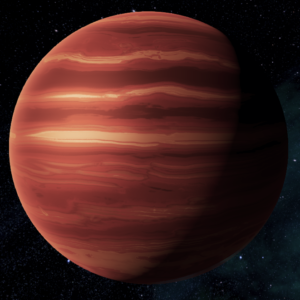
- Orbital Distance: 5.7 AU
- Orbital Period: 15.2 Earth-years
- Keplerian Ratio: 0.802
- Radius: 57,700 km
- Day Length: 12 Earth-hours
- Atmospheric Pressure: N/A atm
- Surface Temp: N/A °C
- Surface Gravity: N/A g
- Mass: N/A Earth-masses
A hydrogen-helium gas giant, Shastessia is a twin to its more massive neighbor Medokos in more than once sense. The two are named for a semi-mythological pair of twins from asari antiquity who ruled neighboring city-states and had a lifelong dialog about the best form of government. As the legend goes, Shastessia died before her vision of a democratic republic could be realized. Her sister, Medokos, then took up the cause, sacrificing personal power so that all free landowners in her city would have a voice. Although historians doubt that the changes were entirely altruistic, pointing to uprisings that demanded representation, the development was a step towards modern asari government.
–
Vylius:
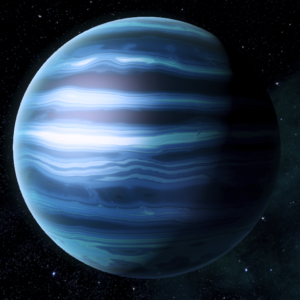
- Orbital Distance: 11.5 AU
- Orbital Period: 43.7 Earth-years
- Keplerian Ratio: 0.796
- Radius: 22,972 km
- Day Length: 14.8 Earth-hours
- Atmospheric Pressure: N/A atm
- Surface Temp: N/A °C
- Surface Gravity: N/A g
- Mass: N/A Earth-masses
- Satellites: >1
Vylius is a hydrogen-methane ice giant drifting out in the frozen depths. Its orbit hosts rings of rock and ice as well as many moons, all drawn from what would otherwise be a secondary asteroid field similar to Sol’s Kuiper Belt.
Vylius is named for a trickster figure in asari mythology, a crafty animal called a manal that seduced asari maidens who then gave birth to hideously deformed offspring. In the tales, Vylius is caught and punished, but they serve as a warning to young asari not to initiate a bond with anyone they cannot trust.
–
–
video
